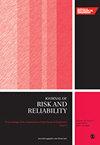基于复杂网络的化学实验室事故致因演化风险分析
IF 1.8
4区 工程技术
Q3 ENGINEERING, INDUSTRIAL
Proceedings of the Institution of Mechanical Engineers Part O-Journal of Risk and Reliability
Pub Date : 2024-09-17
DOI:10.1177/1748006x241271751
引用次数: 0
摘要
化学实验室通常存在各种危险化学品、危险装置和实验操作人员等诸多高风险。一旦发生严重事故,事故后果将严重影响科研创新和社会进步。针对实验室安全问题,建立了事故演化模型,以揭示事故演化过程中的关键事故致因和最可能的事故演化路径。首先,利用 24 模型确定实验室事故的致因因素以及因素之间的因果关系。然后,以事故致因因素为节点,以因素之间的因果关系为边,构建实验室事故演化的复杂网络模型。其次,利用TOPSIS方法,将度中心度、间度中心度、接近度中心度、特征向量中心度等四个典型的复杂网络特征指标构建成综合评价指标,揭示事故演化过程中的关键影响因素。最后,引入模糊数量化事故演化路径的不确定性。通过 Dijkstra 和风险熵理论得到最可能的演化路径。基于 2001 年至 2022 年的 151 起实验室事故数据,对化学实验室事故演化进行了分析。演化结果表明,最大概率值为火灾事故演化路径,最小概率值为触电事故演化路径,符合事故的一般统计规律。应用于实际实验室,通过控制关键影响因素,切断事故演化路径,可有效提高实验室的安全管理水平。本文章由计算机程序翻译,如有差异,请以英文原文为准。
Risk analysis of accident-causing evolution in chemical laboratory based on complex network
Chemical laboratories usually have many high risks from various dangerous chemicals, dangerous devices, and experimental operators involved in the laboratory. Once a severe accident occurs, the accident consequence will significantly impact scientific research innovation and social progress. Aiming at laboratory safety problems, an accident evolution model is established to reveal the critical accident-causing factors and the most likely evolutionary path of accidents in the process of accident evolution. Firstly, the 24 model is used to identify the cause factors of laboratory accidents and the causal relationship between factors. Then, the complex network model of laboratory accident evolution is constructed with accident-causing factors as nodes and causal relationships between factors as edges. Secondly, using the TOPSIS method, four typical complex network characteristic indexes, including degree centrality, betweenness centrality, closeness centrality, and eigenvector centrality, are constructed into a comprehensive evaluation index to reveal the key influencing factors in the accident evolution process. Finally, the fuzzy number is introduced to quantify the uncertainty of the accident evolution path. The most likely evolutionary path is obtained through the Dijkstra and risk entropy theory. Based on the data of 151 laboratory accidents from 2001 to 2022, the accident evolution analysis of chemical laboratories was carried out. The evolution results show that the maximum probability value is the evolution path of fire accidents, and the minimum probability value is the evolution path of electric shock accidents, which accords with the general statistical law of accidents. When applied to the actual laboratory, the safety management level of the laboratory can be effectively improved by controlling the key influencing factors and cutting off the accident evolution path.
求助全文
通过发布文献求助,成功后即可免费获取论文全文。
去求助
来源期刊

Proceedings of the Institution of Mechanical Engineers Part O-Journal of Risk and Reliability
ENGINEERING, MULTIDISCIPLINARY-ENGINEERING, INDUSTRIAL
CiteScore
4.50
自引率
19.00%
发文量
81
审稿时长
6-12 weeks
期刊介绍:
The Journal of Risk and Reliability is for researchers and practitioners who are involved in the field of risk analysis and reliability engineering. The remit of the Journal covers concepts, theories, principles, approaches, methods and models for the proper understanding, assessment, characterisation and management of the risk and reliability of engineering systems. The journal welcomes papers which are based on mathematical and probabilistic analysis, simulation and/or optimisation, as well as works highlighting conceptual and managerial issues. Papers that provide perspectives on current practices and methods, and how to improve these, are also welcome
 求助内容:
求助内容: 应助结果提醒方式:
应助结果提醒方式:


